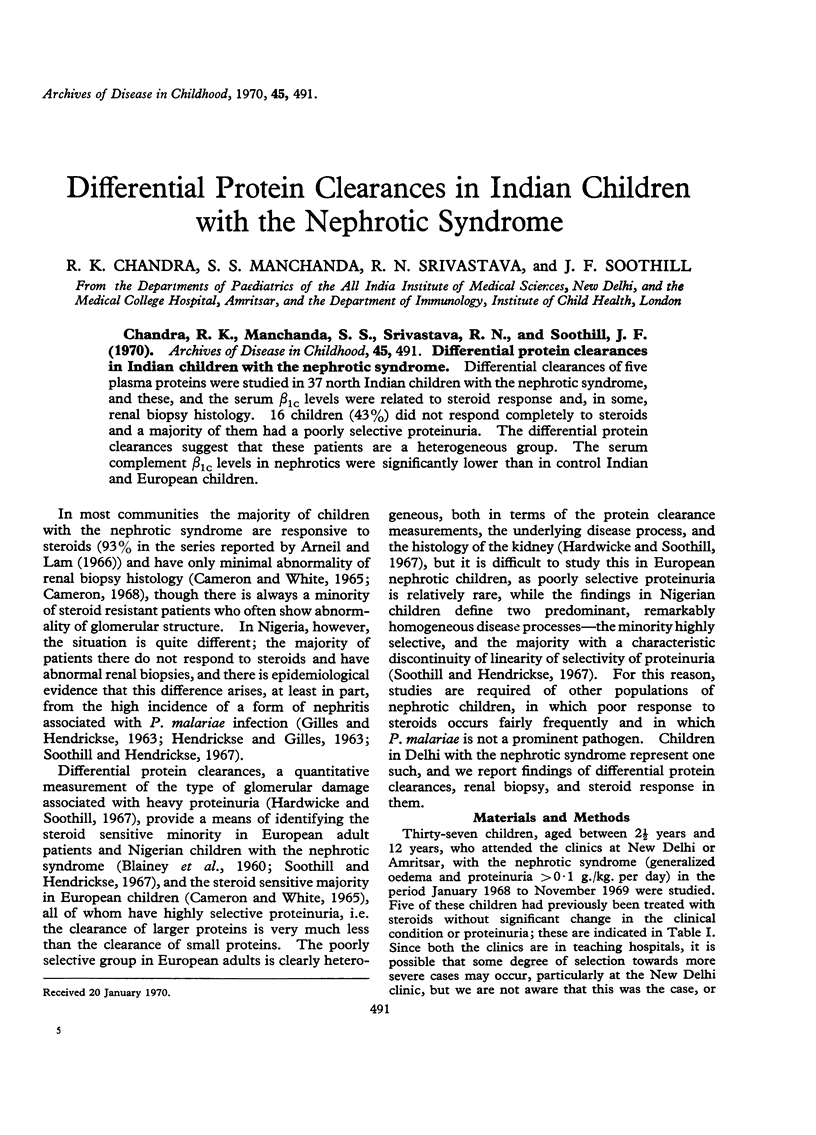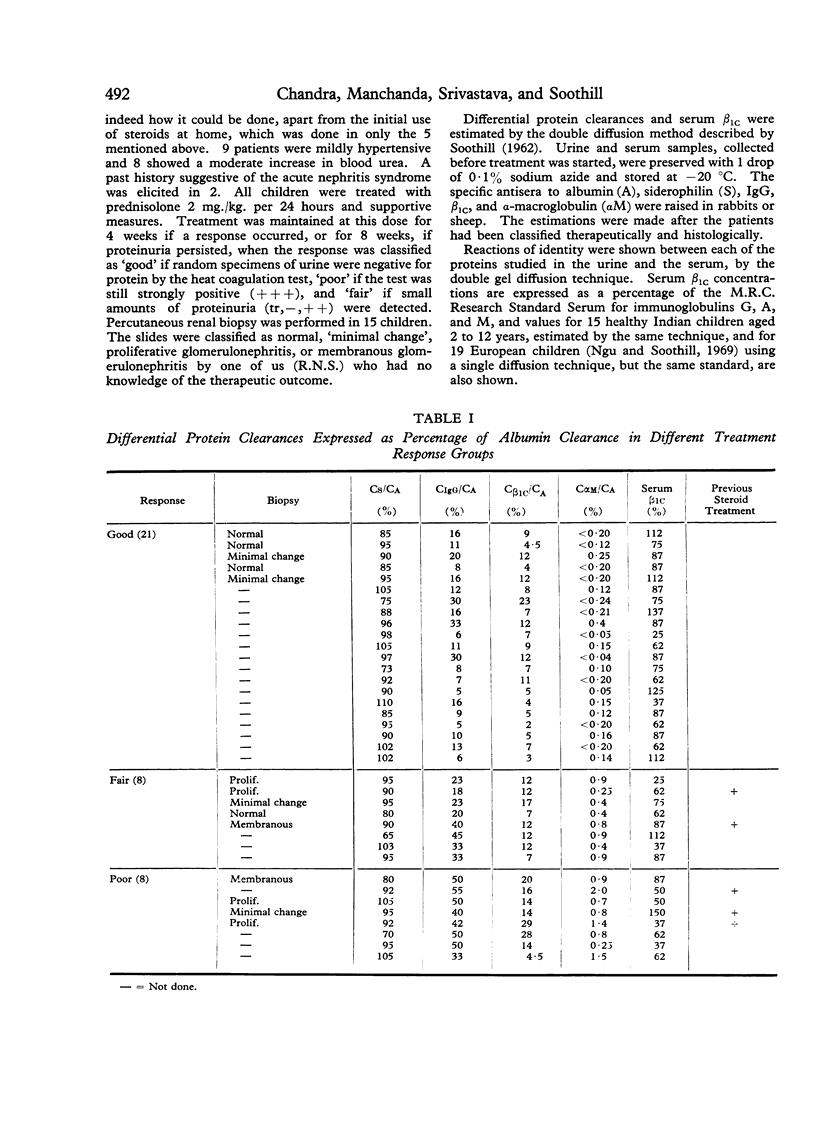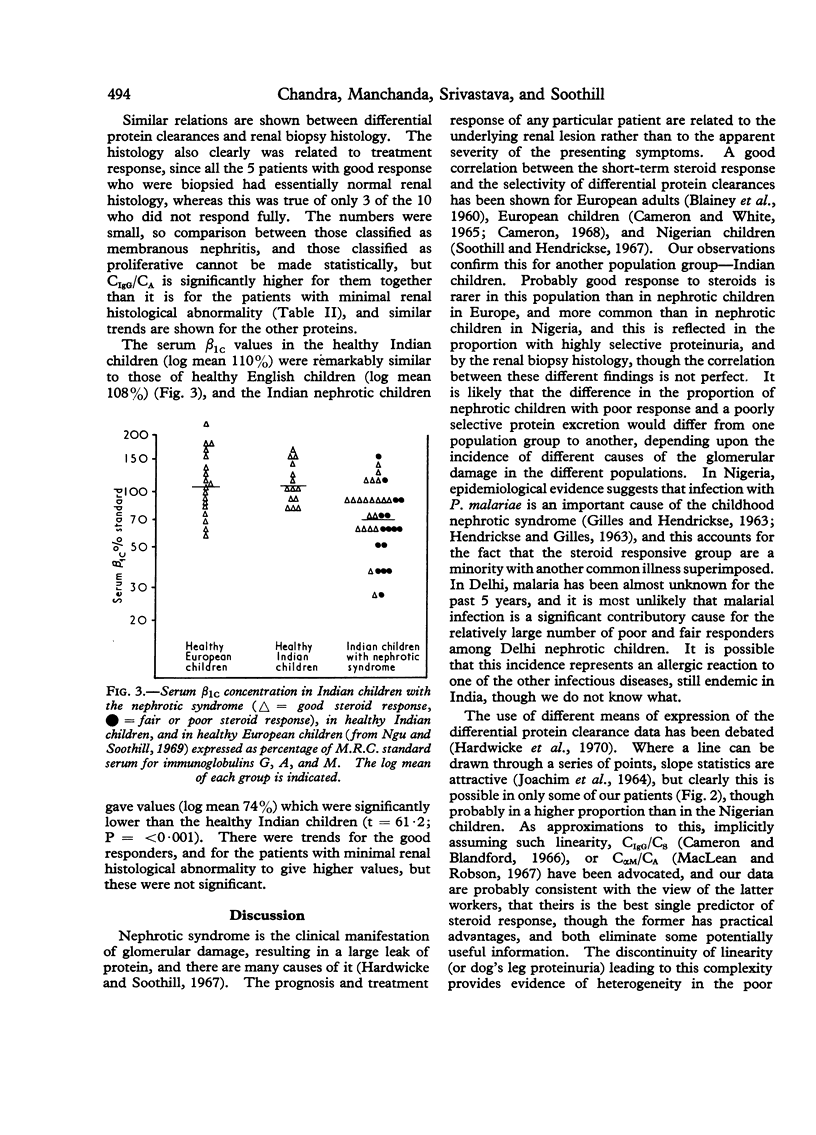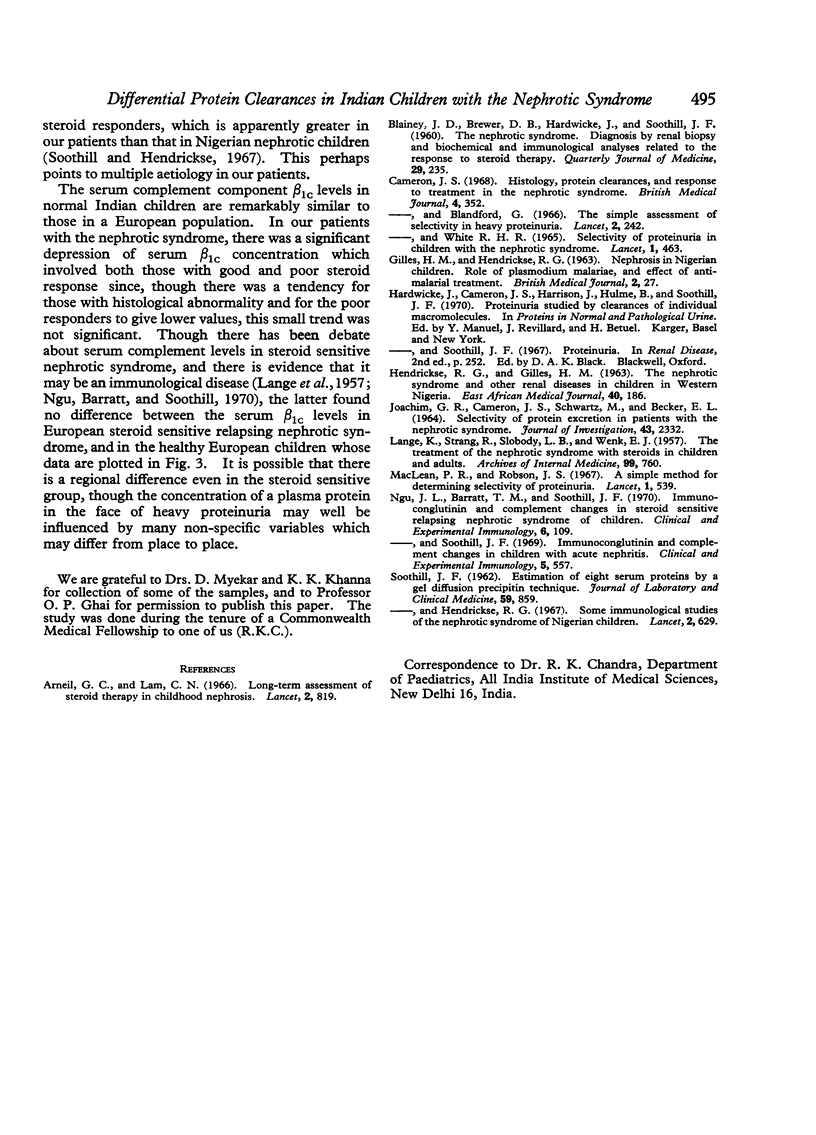Abstract
Differential clearances of five plasma proteins were studied in 37 north Indian children with the nephrotic syndrome, and these, and the serum β1c levels were related to steroid response and, in some, renal biopsy histology. 16 children (43%) did not respond completely to steroids and a majority of them had a poorly selective proteinuria. The differential protein clearances suggest that these patients are a heterogeneous group. The serum complement β1c levels in nephrotics were significantly lower than in control Indian and European children.
Full text
PDF




Selected References
These references are in PubMed. This may not be the complete list of references from this article.
- Arneil G. C., Lam C. N. Long-term assessment of steroid therapy in childhood nephrosis. Lancet. 1966 Oct 15;2(7468):819–821. doi: 10.1016/s0140-6736(66)92253-7. [DOI] [PubMed] [Google Scholar]
- BLAINEY J. D., BREWER D. B., HARDWICKE J., SOOTHILL J. F. The nephrotic syndrome. Diagnosis by renal biopsy and biochemical and immunological analyses related to the response to steroid therapy. Q J Med. 1960 Apr;29:235–256. [PubMed] [Google Scholar]
- CAMERON J. S., WHITE R. H. SELECTIVITY OF PROTEINURIA IN CHILDREN WITH THE NEPHROTIC SYNDROME. Lancet. 1965 Feb 27;1(7383):463–465. doi: 10.1016/s0140-6736(65)91593-x. [DOI] [PubMed] [Google Scholar]
- Cameron J. S., Blandford G. The simple assessment of selectivity in heavy proteinuria. Lancet. 1966 Jul 30;2(7457):242–247. doi: 10.1016/s0140-6736(66)92539-6. [DOI] [PubMed] [Google Scholar]
- Cameron J. S. Histology, protein clearances, and response to treatment in the nephrotic syndrome. Br Med J. 1968 Nov 9;4(5627):352–356. doi: 10.1136/bmj.4.5627.352. [DOI] [PMC free article] [PubMed] [Google Scholar]
- GILLES H. M., HENDRICKSE R. G. Nephrosis in Nigerian children. Role of Plasmodium malariae, and effect of antimalarial treatment. Br Med J. 1963 Jul 6;2(5348):27–31. doi: 10.1136/bmj.2.5348.27. [DOI] [PMC free article] [PubMed] [Google Scholar]
- HENDRICKSE R. G., GILLES H. M. The nephrotic syndrome and other renal diseases in children in Western Nigeria. East Afr Med J. 1963 May;40:186–201. [PubMed] [Google Scholar]
- JOACHIM G. R., CAMERON J. S., SCHWARTZ M., BECKER E. L. SELECTIVITY OF PROTEIN EXCRETION IN PATIENTS WITH THE NEPHROTIC SYNDROME. J Clin Invest. 1964 Dec;43:2332–2346. doi: 10.1172/JCI105107. [DOI] [PMC free article] [PubMed] [Google Scholar]
- LANGE K., STRANG R., SLOBODY L. B., WENK E. J. The treatment of the nephrotic syndrome with steroids in children and adults. AMA Arch Intern Med. 1957 May;99(5):760–770. doi: 10.1001/archinte.1957.00260050088011. [DOI] [PubMed] [Google Scholar]
- MacLean P. R., Robson J. S. A simple method for determining selectivity of proteinuria. Lancet. 1967 Mar 11;1(7489):539–542. doi: 10.1016/s0140-6736(67)92116-2. [DOI] [PubMed] [Google Scholar]
- Ngu J. L., Barratt T. M., Soothill J. F. Immunoconglutinin and complement changes in steroid sensitive relapsing nephrotic syndrome of children. Clin Exp Immunol. 1970 Jan;6(1):109–116. [PMC free article] [PubMed] [Google Scholar]
- Ngu J. L., Soothill J. F. Immunoconglutinin and complement changes in children with acute nephritis. Clin Exp Immunol. 1969 Dec;5(6):557–566. [PMC free article] [PubMed] [Google Scholar]
- SOOTHILL J. F. Estimation of eight serum proteins by a gel diffusion precipitin technique. J Lab Clin Med. 1962 May;59:859–870. [PubMed] [Google Scholar]
- Soothill J. F., Hendrickse R. G. Some immunological studies of the nephrotic syndrome of Nigerian children. Lancet. 1967 Sep 23;2(7517):629–632. doi: 10.1016/s0140-6736(67)90681-2. [DOI] [PubMed] [Google Scholar]


